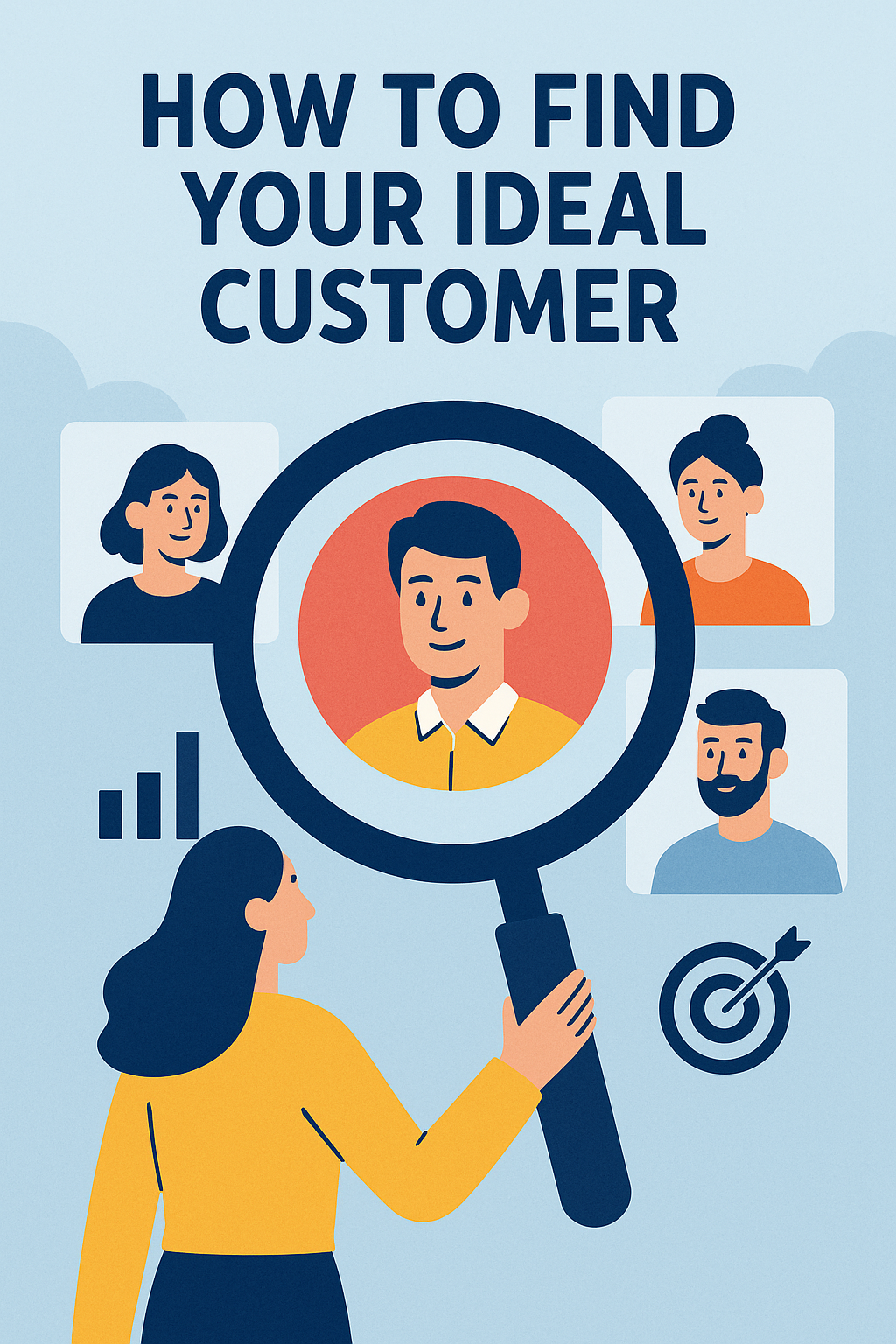As a small entrepreneur, one of the most critical steps to business success is identifying your ideal customer. Knowing exactly who your customers are allows you to tailor your marketing, messaging, and products to meet their specific needs and desires. When you know your ideal customer, you can attract and retain them more effectively, making your business more focused and profitable.
This article will explore practical strategies to help you find your ideal customer and build stronger connections with them.
Why Finding Your Ideal Customer Matters
Understanding who your ideal customer is offers several key advantages:
- Targeted Marketing: Instead of casting a wide net, you can focus your efforts on reaching the right audience.
- Increased Conversions: When your messaging speaks directly to their needs, customers are more likely to take action.
- Customer Loyalty: Understanding their needs builds trust and loyalty, which translates into repeat business.
- Optimized Product Development: Knowing what your ideal customer values allows you to improve and adapt your offerings.
Finding your ideal customer helps your business grow faster and more sustainably.
Step 1: Define Your Product or Service Clearly
Before identifying your ideal customer, you need to define what your business offers and how it solves problems.
Ask yourself:
- What problems does my product or service solve?
- How does it benefit the customer?
- What makes my offering unique compared to others in the market?
A clear understanding of your product will guide you in identifying who will benefit most from it.
Step 2: Analyze Your Current Customers
If you already have some customers, look at the ones who are most loyal and profitable.
Questions to ask:
- Who are my best customers (those who buy frequently or spend the most)?
- What do they have in common (age, gender, interests, location)?
- What problems do they face that my business solves?
By analyzing your existing customers, you can identify patterns that help you pinpoint who your ideal customers are.
Step 3: Create a Customer Persona
A customer persona is a detailed representation of your ideal customer. It helps you visualize who you are trying to attract.
Key components of a customer persona:
- Demographics: Age, gender, income, education, and location.
- Psychographics: Interests, values, lifestyle, and personality.
- Behaviors: Buying habits, preferences, and how they interact with your product.
- Pain Points: The challenges or problems they want solved.
The more detailed your customer persona, the easier it will be to craft targeted marketing and offers.
Step 4: Conduct Market Research
Market research helps you better understand your target audience and what they want.
Ways to gather insights:
- Surveys: Ask your current customers about their preferences, challenges, and buying habits.
- Competitor Analysis: Study your competitors’ customers and marketing strategies to find gaps you can fill.
- Social Media Insights: Monitor what your followers engage with and what questions they ask.
The more data you collect, the more accurately you can identify your ideal customer.
Step 5: Understand Your Customer’s Journey
Your ideal customer follows a journey from awareness to purchase. Understanding this journey helps you connect with them at each stage.
Steps of the customer journey:
- Awareness: They realize they have a problem.
- Consideration: They look for solutions.
- Decision: They choose a product or service to solve their problem.
- Post-Purchase: They evaluate their experience and decide if they’ll return.
By knowing where your ideal customer is in this journey, you can create relevant content and offers that speak to their needs at each stage.
Step 6: Use Social Media and Online Communities
Social media platforms and online communities are great places to connect with your ideal customers.
Here’s how to use them effectively:
- Follow the right hashtags: Explore trending topics in your industry to find your audience.
- Join Facebook or LinkedIn groups: Participate in communities where your ideal customer spends time.
- Post relevant content: Share blog posts, videos, or infographics that resonate with their needs and interests.
Social media lets you engage directly with your audience and learn more about their preferences.
Step 7: Test and Refine Your Targeting
Finding your ideal customer is an ongoing process. As your business grows and markets change, you should continue testing and refining your customer persona.
Ways to test:
- A/B testing: Test different marketing messages or products to see which resonates best with your audience.
- Customer feedback: Regularly ask for input from your customers on how you can better serve them.
- Analyze data: Use tools like Google Analytics or Facebook Insights to monitor customer behavior and refine your targeting.
Regular testing and feedback will ensure you stay connected with your ideal customer over time.
Final Thoughts: Focus on Quality Over Quantity
Finding your ideal customer is not about reaching as many people as possible—it’s about reaching the right people who will truly benefit from your product and become loyal customers. By defining your product, creating customer personas, conducting market research, and engaging with your audience, you can attract and retain your ideal customer more effectively.
Remember: when you speak directly to the needs and desires of your ideal customer, you’ll see better results in both sales and long-term customer loyalty.
